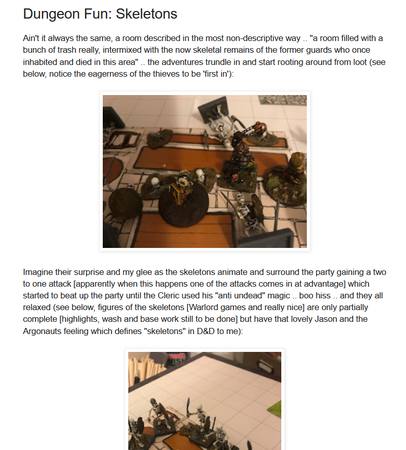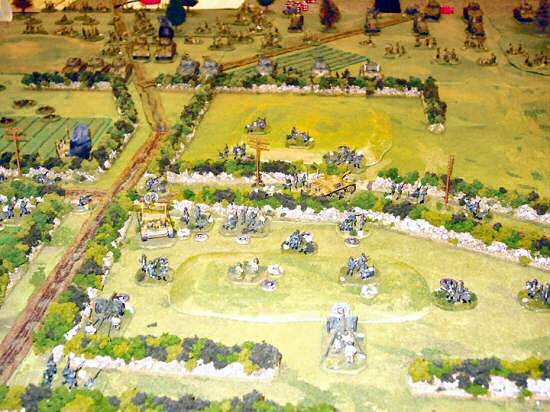At home, I started painting the tankard. ![]() I basecoated it with:
I basecoated it with:
- Desert Yellow (VMC 977) – wood
- Intermediate Blue (VMC 903) – bands
- Cobra Leather (VMC 72040) – beer


Wooden parts were washed with Smoke (VMC 939), and the beer was highlighted with Bronze Fleshtone (VGC 36), and I kept adding more and more Pale Sand (VMC 837). It doesn't have to be too neat, and imagining real beer helps in brushing the surfaces the right way, so that the paint sticks to it like we imagine the real head on beer! ![]()

I loaded some thinned black ink onto my brush, and intensified the shadows under the metal bands.

When it was already dry, I brushed the wood with the side of my brush loaded with the base color (Desert Yellow VMC 977) to make the texture sharper and neater. But before doing it, I unloaded excess paint by pulling the bristles along my hand. This way, I avoided paint running into my carefully shaded recesses. Results can be seen on the photo above.
I cleaned the surface of the metal rings with my base color and, when the paint on the wood was dry, I used black ink again - but this time I didn't thin it as much as before, and I removed some paint from the brush, because I didn't want to duplicate the previous effect. This time, I was painting the shadows cast by the rings, and not the shadows in the recesses.

I took my favorite paint ![]() (Smoke) again and, after thinning it a bit, I painted damp patches on the wood.
(Smoke) again and, after thinning it a bit, I painted damp patches on the wood.
When it was dry, I corrected the contrast by outlining stains on the wood with paint (without thinning). While the wood was drying, I started making the head on the beer. ![]() I placed highlights where (in my opinion) a bit more of the collected foam would look good. When the wood was dry, I applied some streaks of thinned-down white on it. After adding a few spots of thick white paint, it was done.
I placed highlights where (in my opinion) a bit more of the collected foam would look good. When the wood was dry, I applied some streaks of thinned-down white on it. After adding a few spots of thick white paint, it was done.

With a more subtle version of drybrushing, I brushed the dry parts of the wooden tankard. I took VMC Iraqui Sand and, with a wet brush, I mixed paint on my palette to thin it a bit (as it's really thick).
I cleaned the brush by dragging it in the direction of the bristles, taking care to avoid deforming and damaging them. I kept brushing the wood, focusing on emphasizing the wet look of spilled beer with contrasts, which I achieved by highlighting the edges of the stain.
The frontal part of the tankard is leaning downward, so metal bands should reflect light in different ways in the front and in the back.
In the front, I started by shading the metal by adding a bit of Smoke to the base color (picture on the left), and then highlighted by adding Ghost Grey (VGC 46). White was added for defining the edges of the band.


In the back, I allowed myself to paint some more light, so I shaded only the parts which would be covered in deepest shadows, and the rest of the band was highlighted. I started by adding Ghost Grey to the base color (picture on the left), and when I reached pure Ghost Grey, I started adding white. ![]() In addition to reflected light, I also highlighted the edges of the band.
In addition to reflected light, I also highlighted the edges of the band.
That's what I did to the swinging tankard full of beer. Did I succeed? You can judge, and try it yourselves! ![]()











